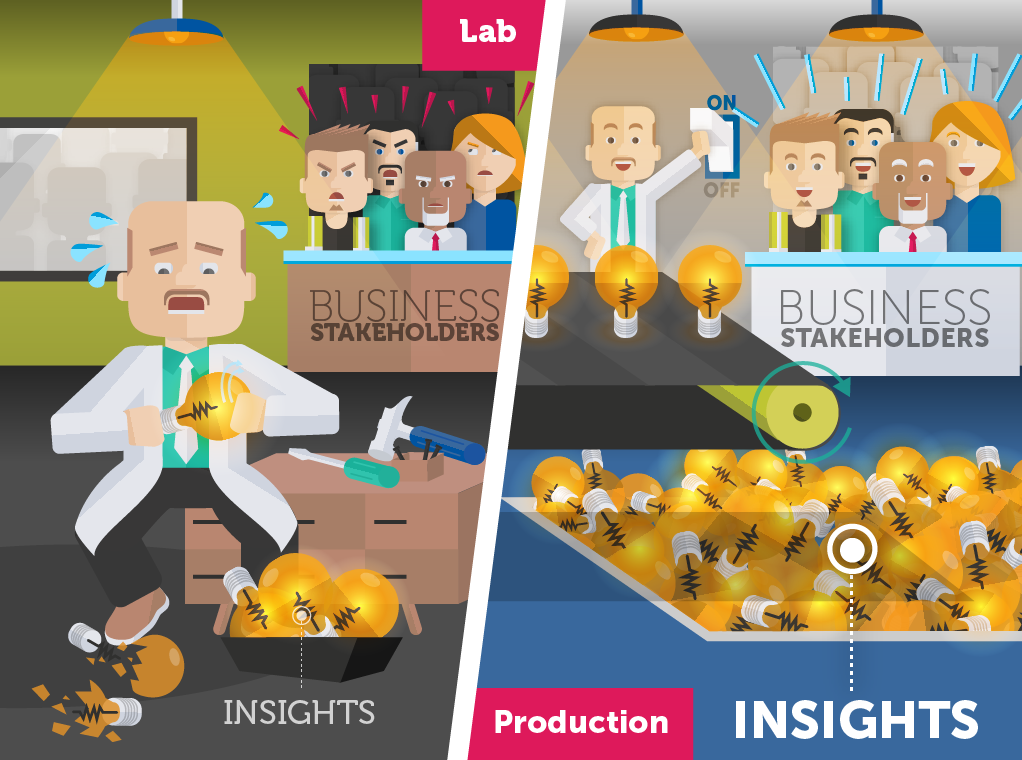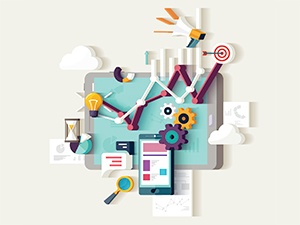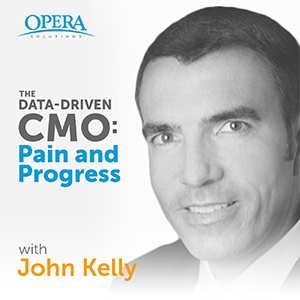Online shoppers are getting antsy. They’re spending less time thinking about purchases before buying — or leaving a site — and drastically shrinking marketers’ opportunity time. We explore the latest trends in online personalization — and how to keep up.
We spend a lot of time talking about personalization in marketing. That’s because it’s both the most profitable way for our customers to leverage artificial intelligence and the most challenging. A new paper by Seth Earley, published in IEEE’s November/December issue of IT Professional, lays out some of these challenges and addresses how best to overcome them.“AI-Driven Analytics at Scale: The Personalization Problem” touches on many of the issues our customers face every day, including maximizing data scientists’ time, developing use cases in a timely fashion, and even using a Signal Layer to help expedite the process. It also cites a new study that examines exactly how much time companies must apply their personalization insights in a real-time setting.
Read More
Topics:
Big Data,
Analytics,
Marketing,
Artificial Intelligence
Managers and executives at all levels are now expected to be at least familiar with how machine learning models are built and deployed. However, if you don’t have a formal data science education, reading through industry publications is not very helpful: High-level use case descriptions and marketing materials too often present machine learning as somewhat of a dark magic powering their products; technical publications tend to be incomprehensible for a nonspecialist, and how-to guides simply list the steps without giving sufficient background as to why each step is needed, which limits understanding.
Read More
Topics:
Big Data,
Machine Learning,
Analytics

Data is the lifeblood of most organizations these days. The insights that come from a company’s data can help drive major — and minor — decisions, providing incremental boosts in company performance on a regular basis and even drastic boosts on occasion. But if you’re not seeing these kinds of results from your data, your problem might not be the analytics. It’s more likely that you’re missing key steps in preparing the data and ensuring its quality.
Proper data preparation ensures the ability to access both internal and external sources of data and transform these data sets into a form that’s ready for analysis. This might involve various forms of data transformation, including processes for improving data quality. Data scientists spend up to 80% of their time preparing data for analysis and ensuring its quality, leaving only 20% to do the actual modeling and analysis that deliver the relevant, actionable insights companies are after.
These numbers are not new, and they shouldn’t be a surprise to anyone reading this. But for those wondering what exactly goes into the process, why it takes up so much of scientists’ time, and why data prep and data quality are so important, we spell it out here.
Read More
Topics:
Big Data,
Data Science,
Data Equity
Here at Opera Solutions, we often refer to data equity, which we define as not just the amount of data you have, but also the ability to derive value from it. And to get value from your data, you need to ensure it is high quality. But how? Knowing the answer could make the difference between data equity and data bust.
Read More
Topics:
Big Data,
Signal Hub Technologies,
Analytics,
Data Equity
Shopping around for a Big Data analytics solution is a daunting task for anyone. But for those who are somewhat familiar with data science, a common area of misunderstanding — and underestimating — is clustering techniques. Whether the assumption is that all clustering techniques are created equal or that a company needs only one or two clustering techniques, business buyers are often left scratching their heads. The fact is several types of clustering techniques exist — each with its own strengths and weaknesses — and companies need access to a variety of techniques to accomplish optimal results.
Read More
Topics:
Big Data,
Data Science,
Analytics
Opera Solutions is pleased to announce its new podcast series, the Data-Driven CMO. With an increasing focus on technology and Big Data, the marketing profession must rapidly learn how to use such technologies as predictive analytics, machine learning, and artificial intelligence.
At Opera Solutions, we have helped several global companies transform their marketing using our predictive analytics software. However, technology and products are only part of the story, and we wanted to bring the organizational and human perspective on this transformative shift to light. Our new podcast series opens the discourse through direct conversations with some of the most technically adept marketing leaders.
Read More
Topics:
Big Data,
Analytics,
Marketing
As the amount of data accumulated by businesses continues to grow, one of the often confounding questions asked is “How do we turn it into insights and then profits?” Sooner or later, most businesses find themselves confronted with analysis paralysis and become unable to extract meaningful insights or monetary value from the data that should be fueling their growth.
Read More
Topics:
Big Data,
Analytics
What’s the big deal about Millennials? For starters, they’re now the biggest demographic in America. But their needs are unlike any generation before them. Here’s what retailers must know to succeed in marketing to this 80-million–strong population.
Millennials are now the largest living generation in the United States, according to the US Census Bureau. Defined loosely as those born from the early 80s to the early 2000s, Millennials account for roughly 25% of the US population at 83.1 million, exceeding the 75.4 million Baby Boomers in the country. They grew up with household computers, cell phones, and myriad other forms of technology, and they entered the work force during the Great Recession, which has made them price-conscious, tech-savvy shoppers — and robust savers. About half of them still live at home, and they’ve taken over the work force. While most are holding off on marriage, nearly 40% have children and 9% live with domestic partners, indicating that they’re starting families and establishing households (i.e. shopping and spending). Perhaps the most telling stats come from a study from FutureCast, which says that Millennials’ purchases are most influenced by their social circles and that they’re the first generation to influence older generations.
Read More
Topics:
Big Data,
Data Science,
Marketing
In this interview with PYMNTS, Laks Srinivasan discusses the challenges and opportunities the Big Data brings to the world's largest enterprises.
Big Data may be everywhere, but that doesn’t mean that companies are able to actually get the most out of it in an efficient and scalable way.
With the notion that the world’s flow of computable information would eventually become the oil of the twenty-first century, Opera Solutions was launched back in 2004 with the goal of addressing the challenges and opportunities emerging as a result of the influx of data that came from more people having increased access to technology and a greater ability to generate even more data.
Read More
Topics:
Big Data,
Data Science,
Machine Learning
Artificial Intelligence (AI) is helping the enterprise create dynamic new applications and new ways to better serve customers, prevent and cure diseases, detect security threats, and more. We’re seeing how rapid advances in the field as a whole as well as the underlying technology are leading to more real-world opportunities that already are making a big impact. Speaking at a 2017 panel discussion with the The Wall Street Journal, AI luminary Andrew Ng observed, “Things may change in the future, but one rule of thumb today is that almost anything that a typical person can do with less than one second of mental thought we can either now or in the very near future automate with AI.” That’s a startling assessment for what we can expect.
Read More
Topics:
Big Data,
Data Science,
Machine Learning,
Artificial Intelligence












